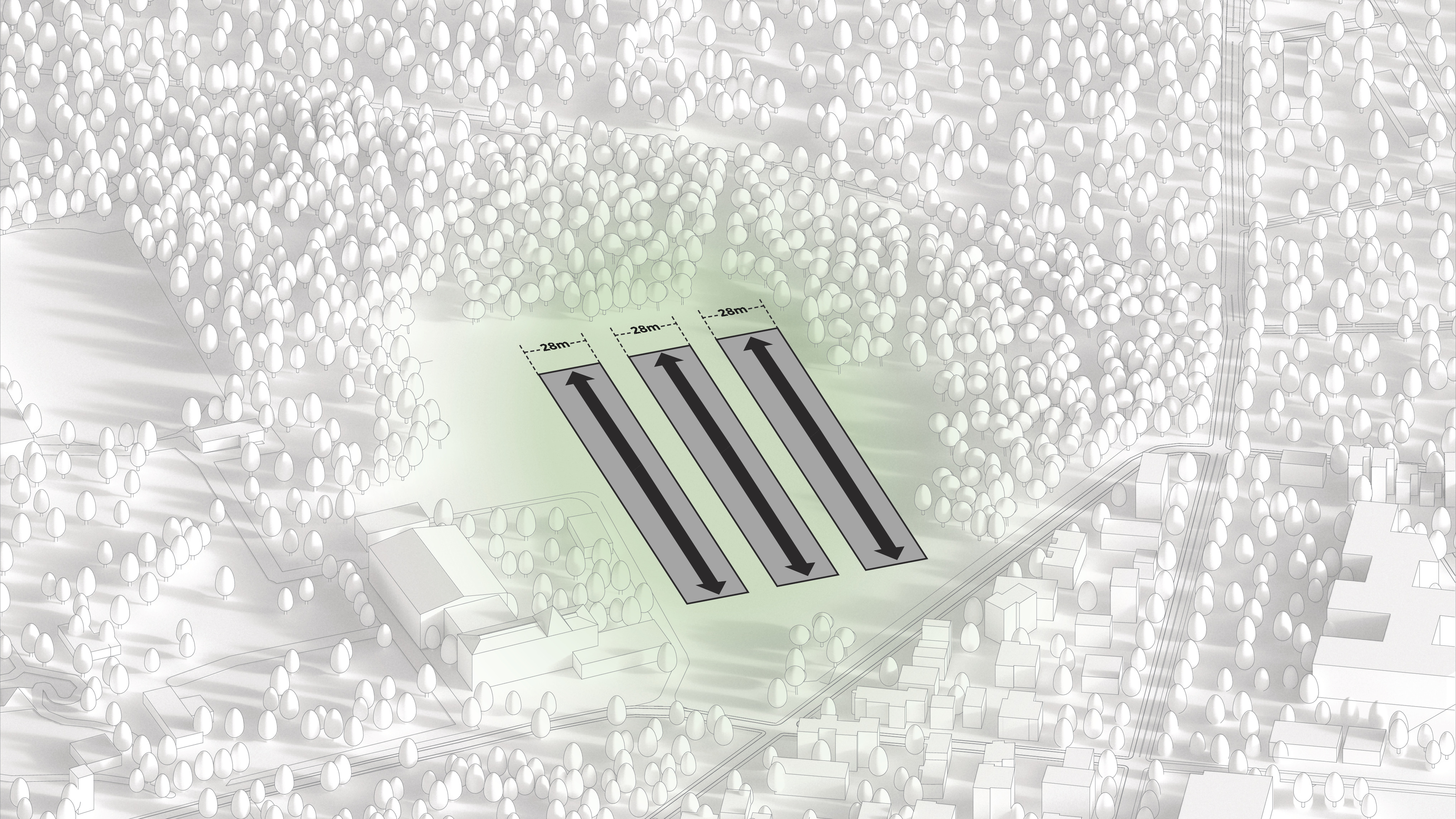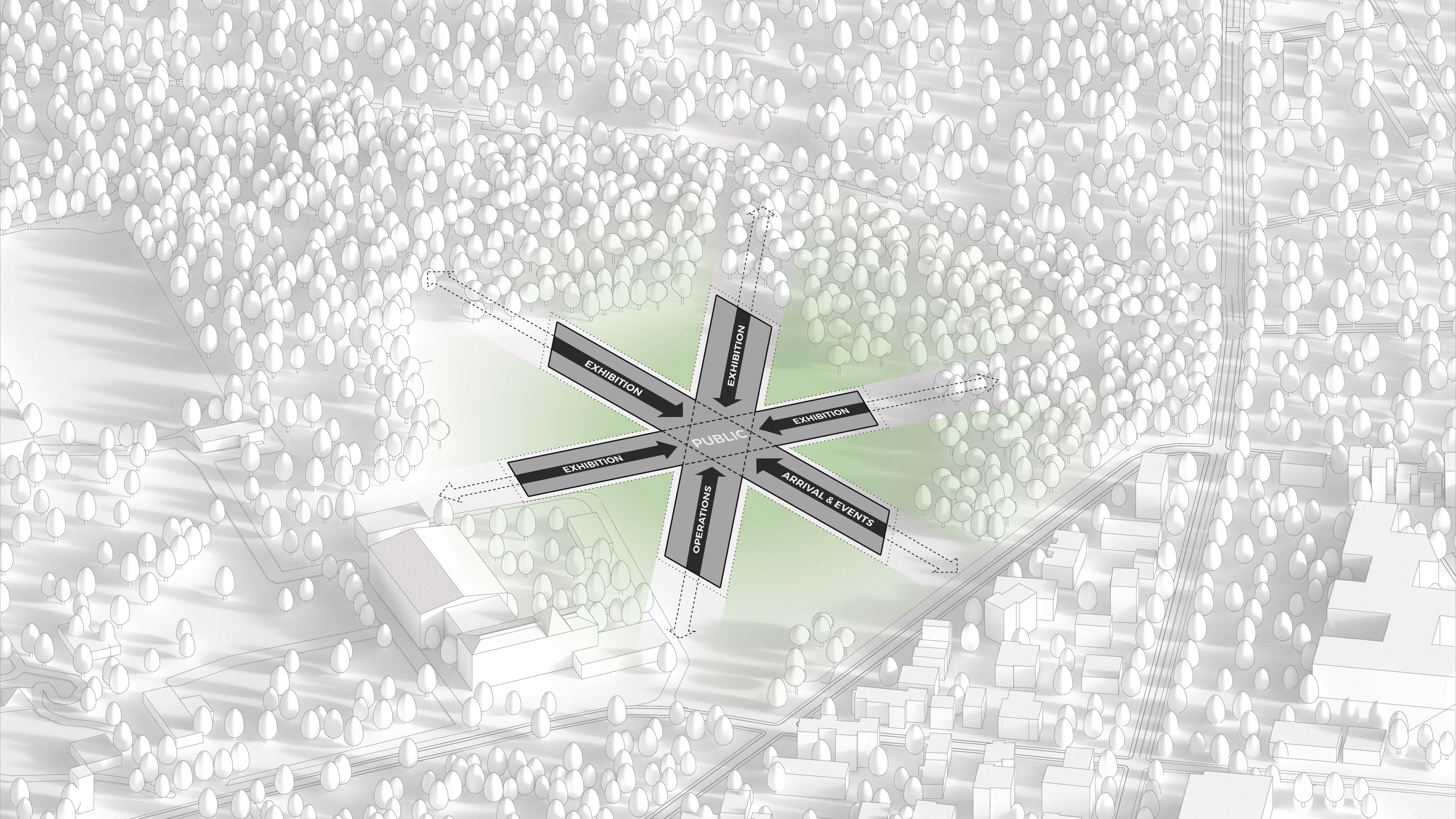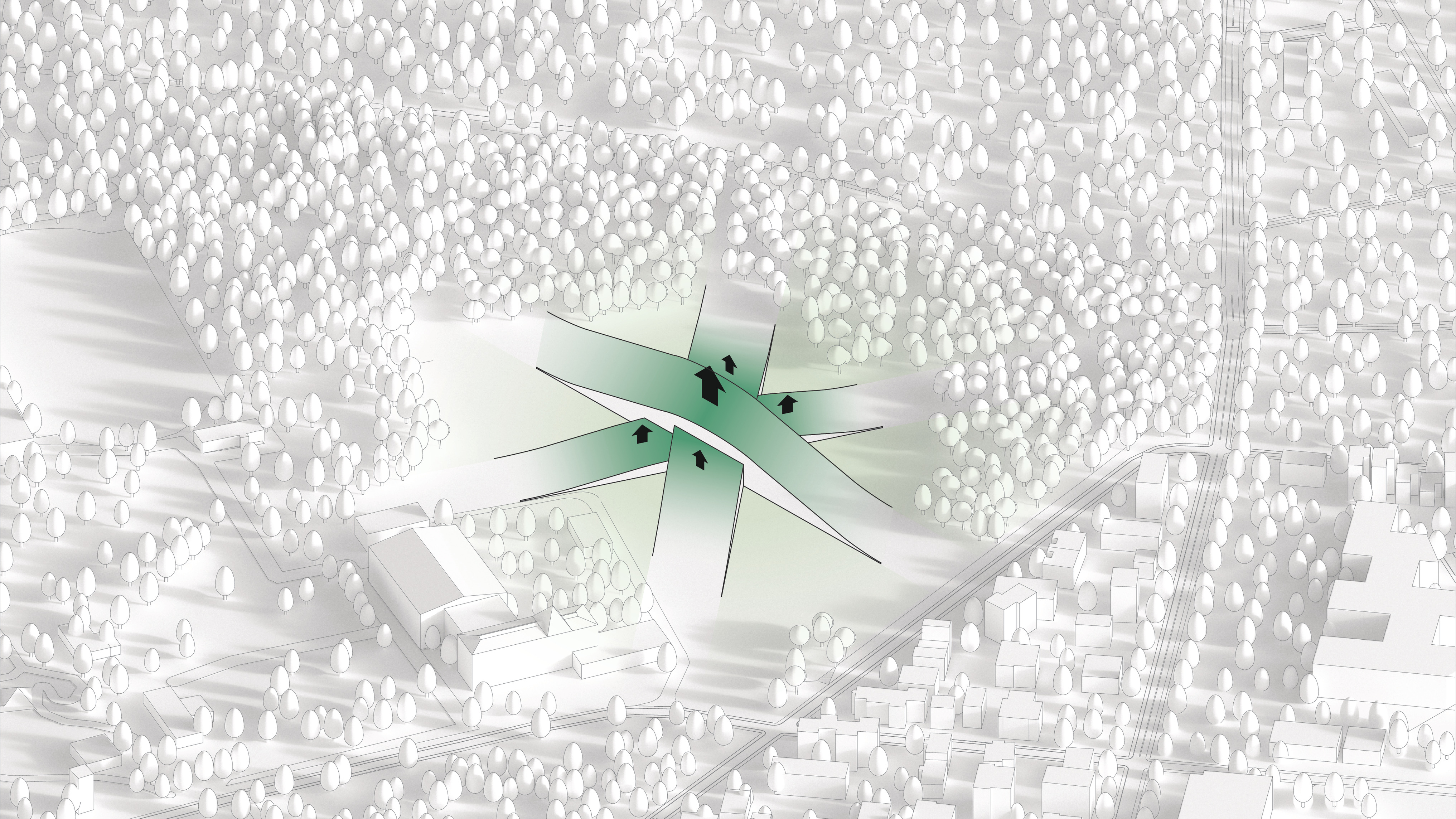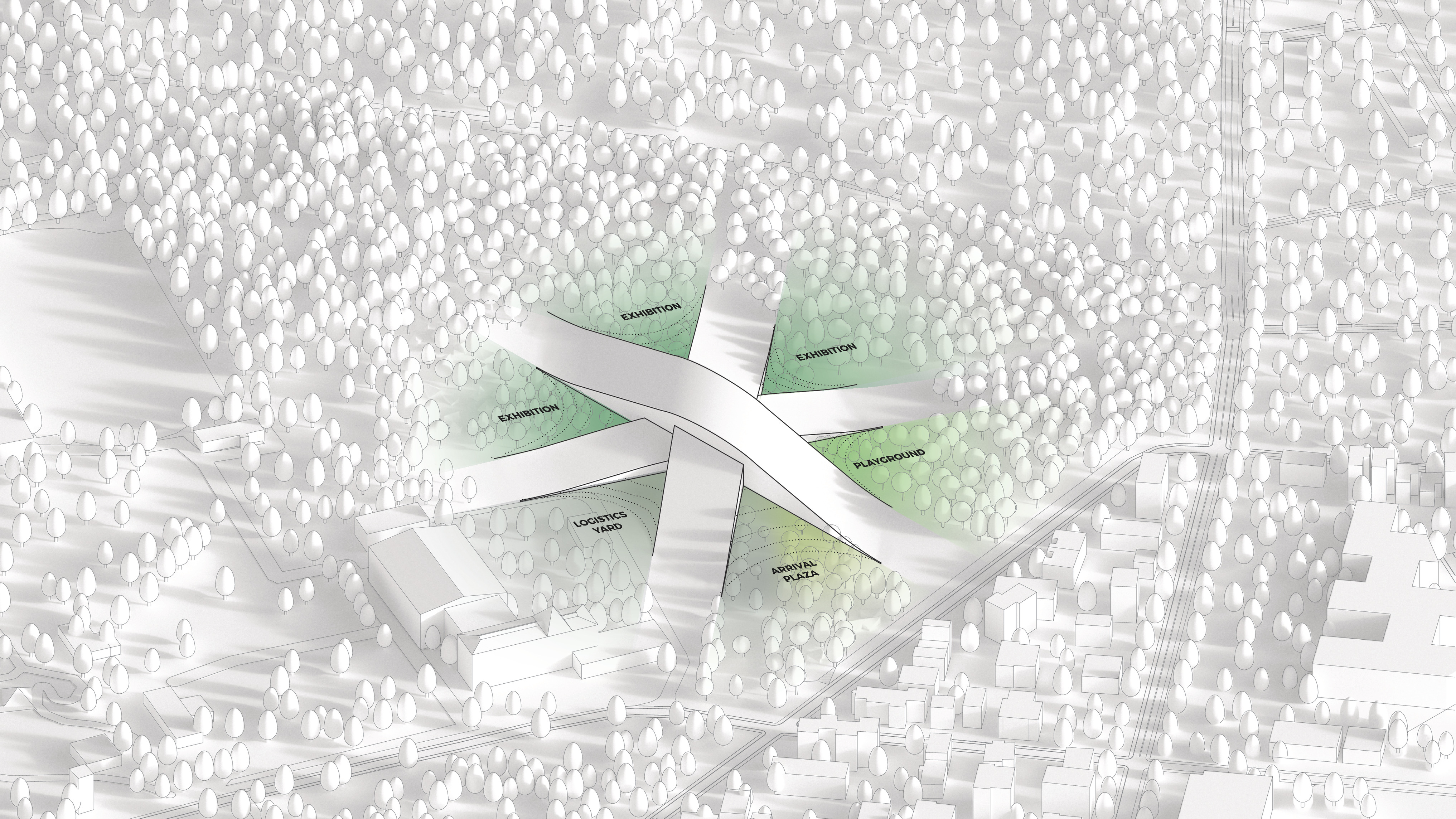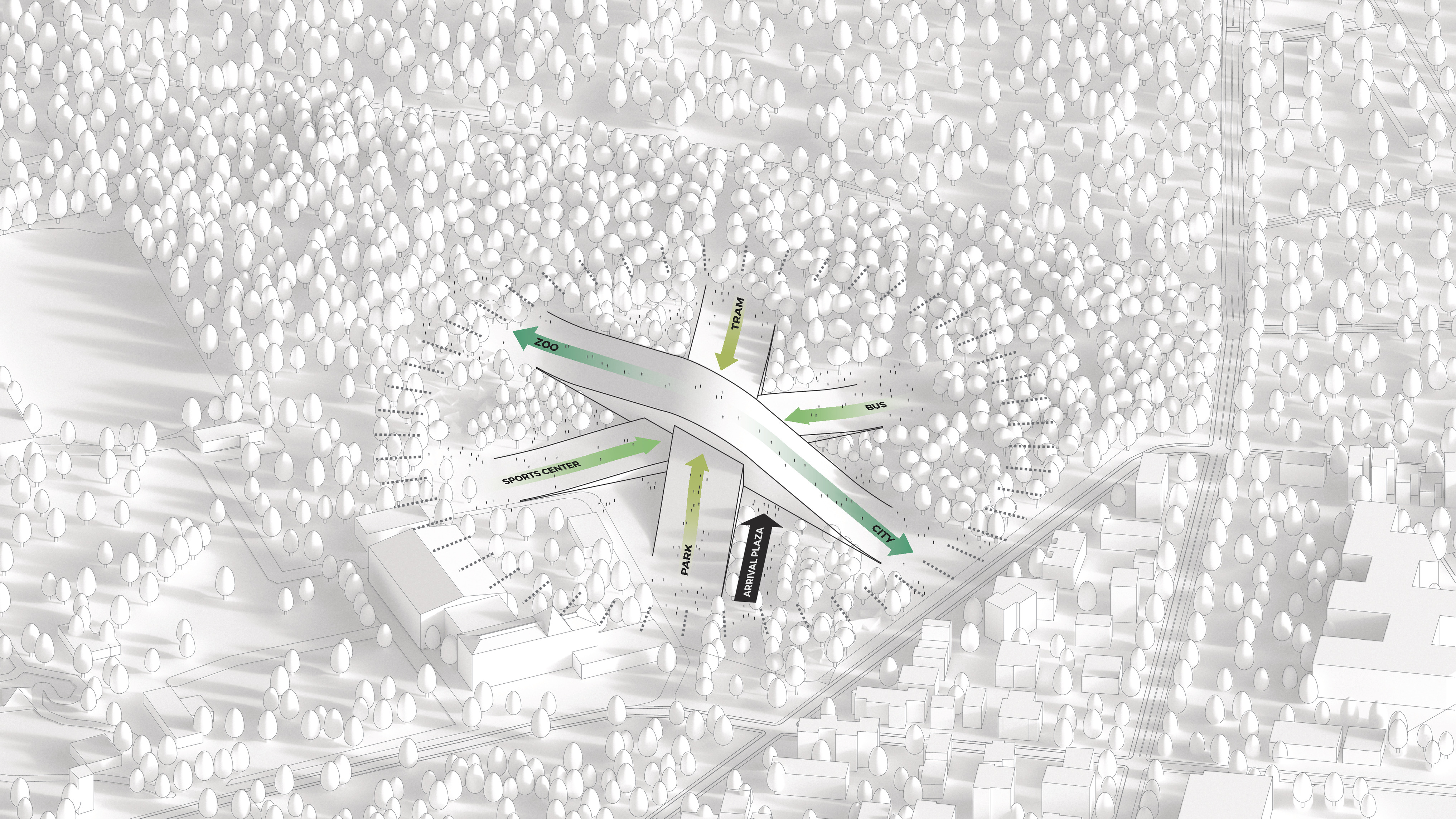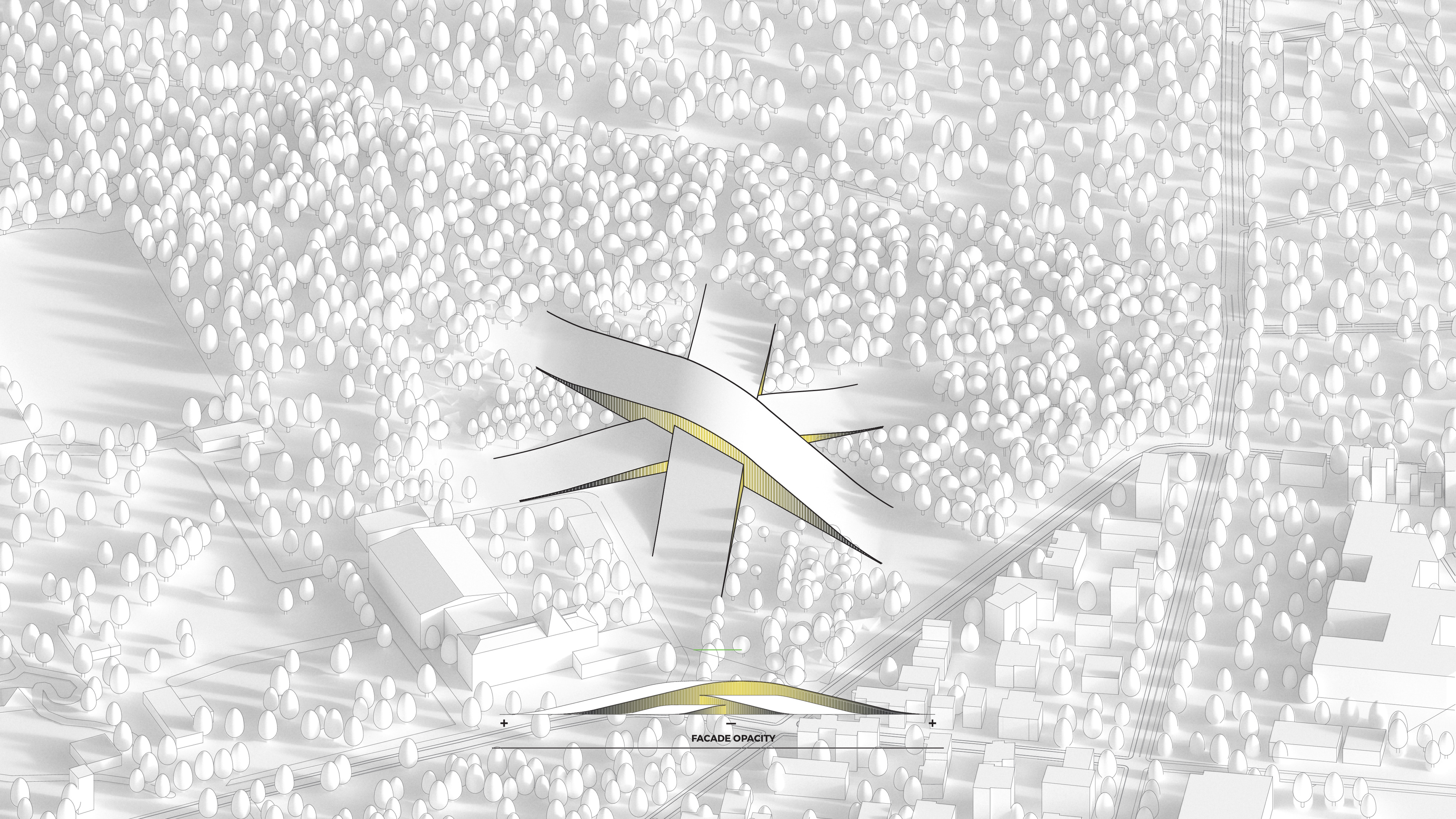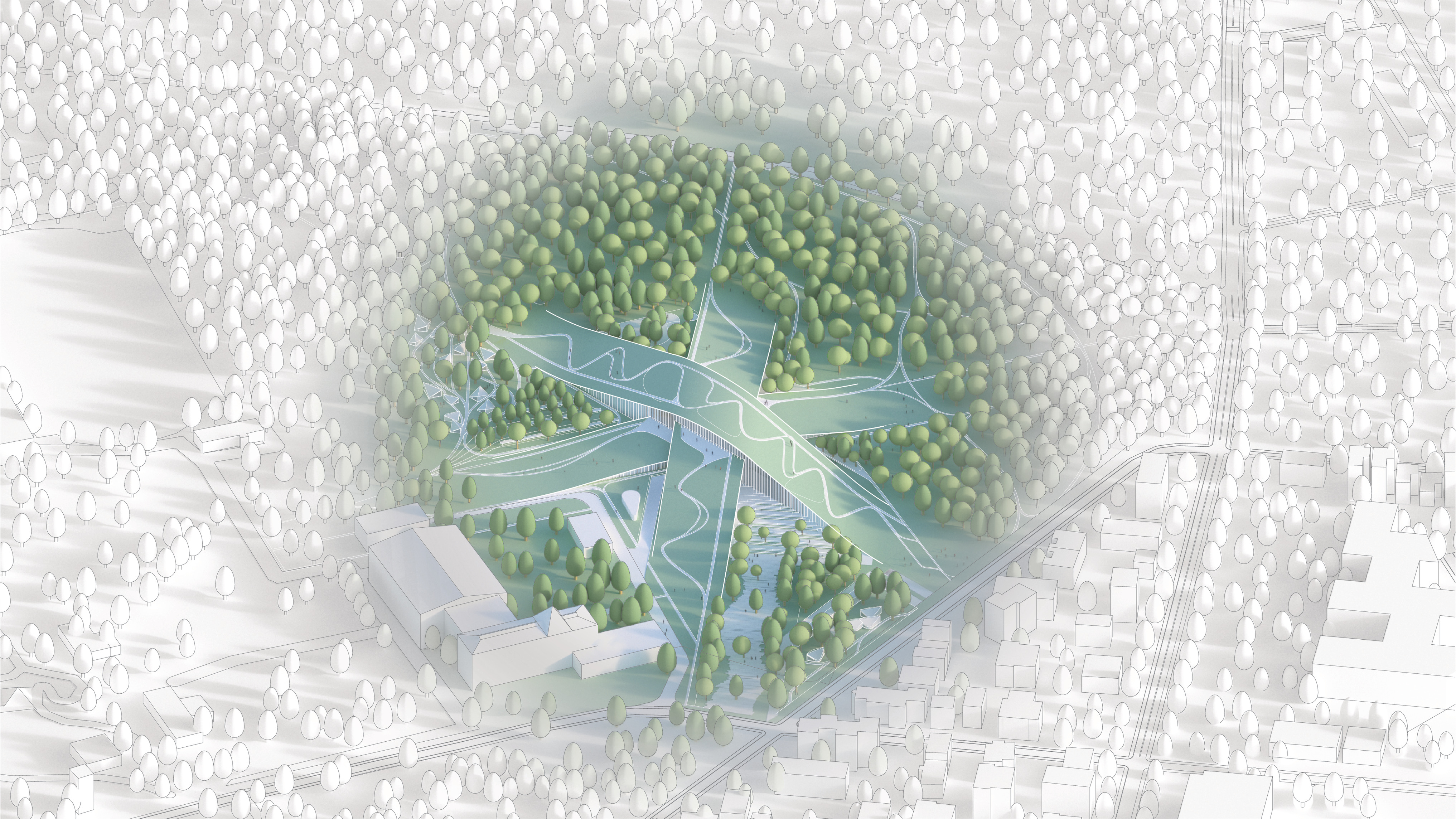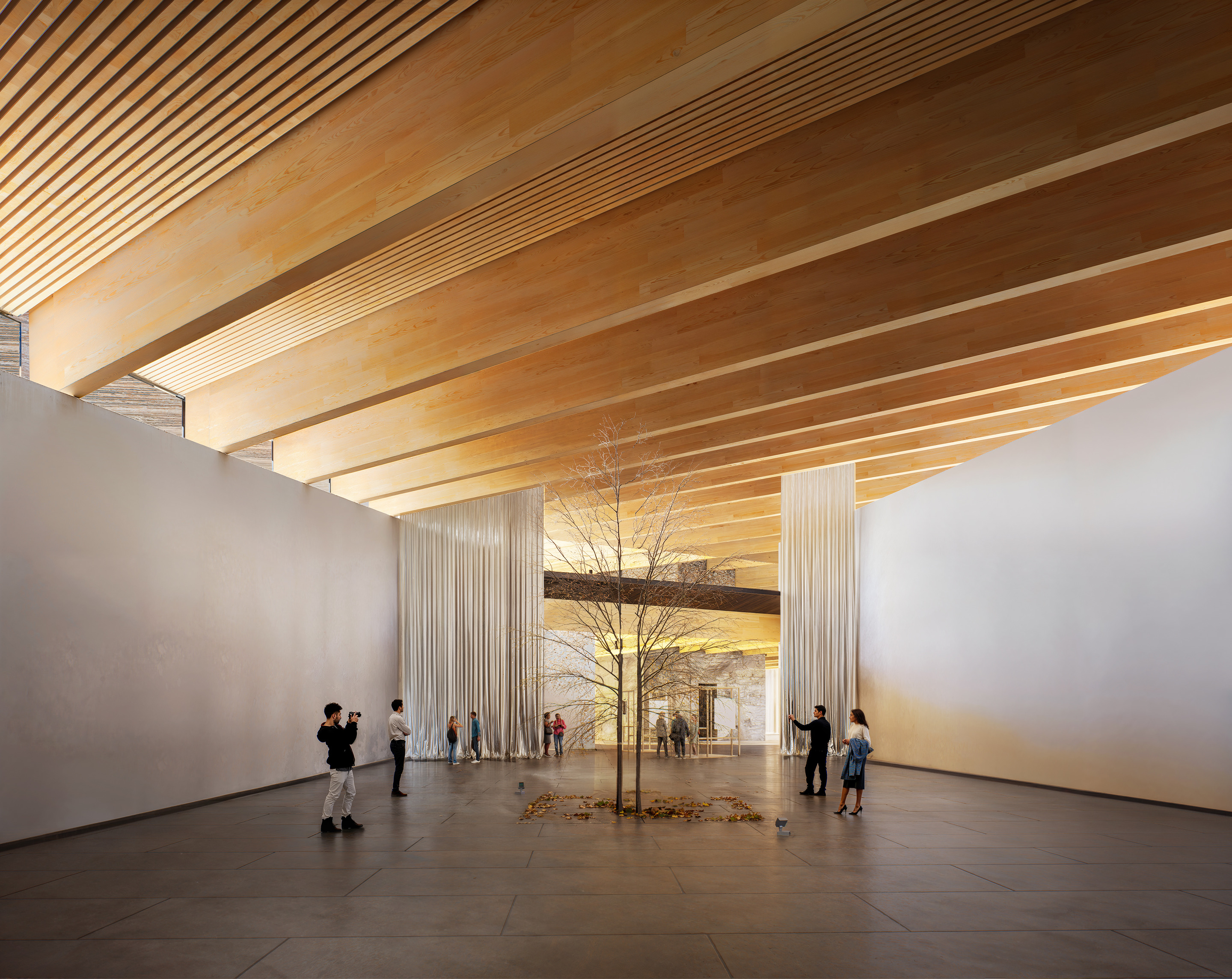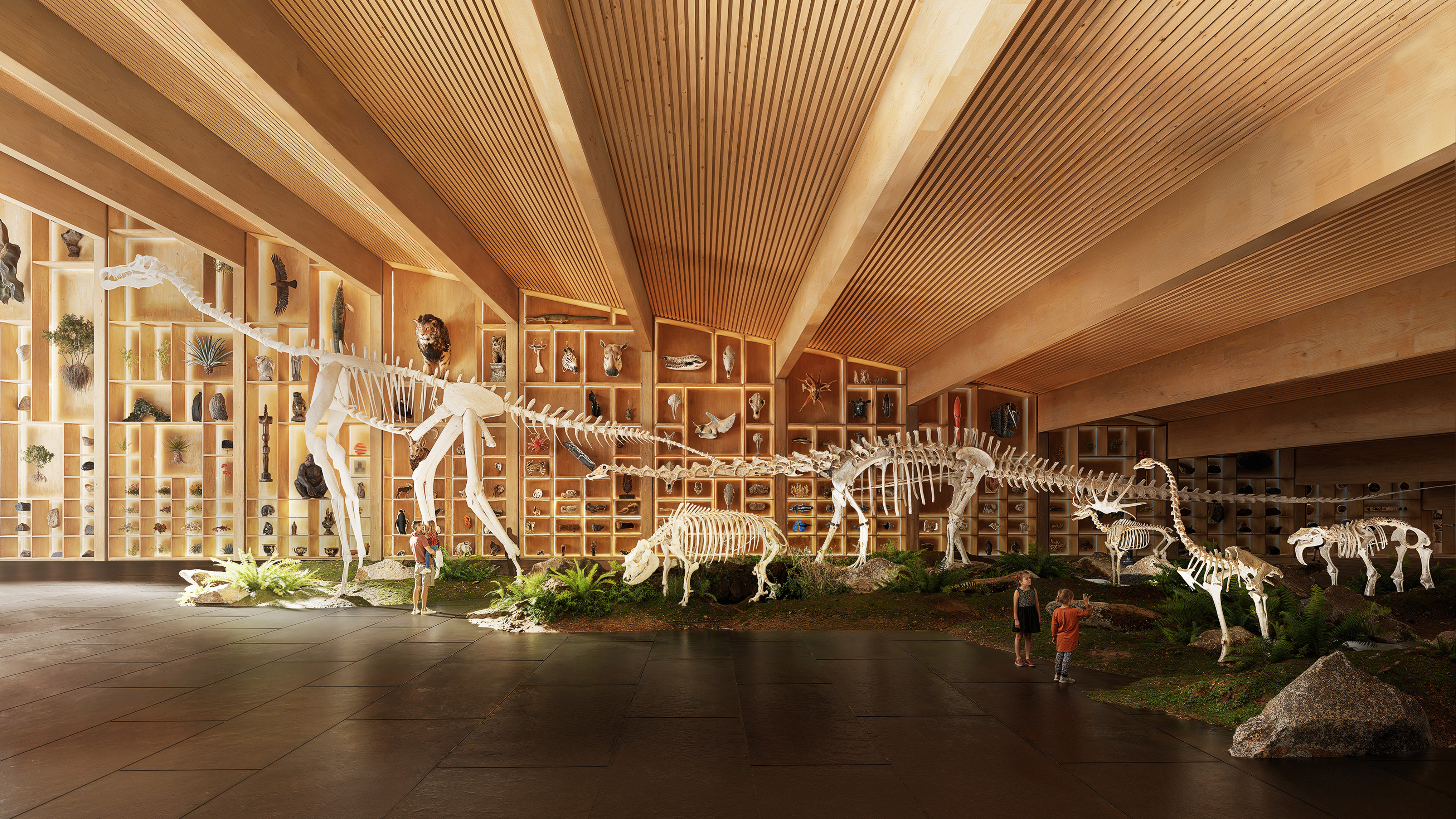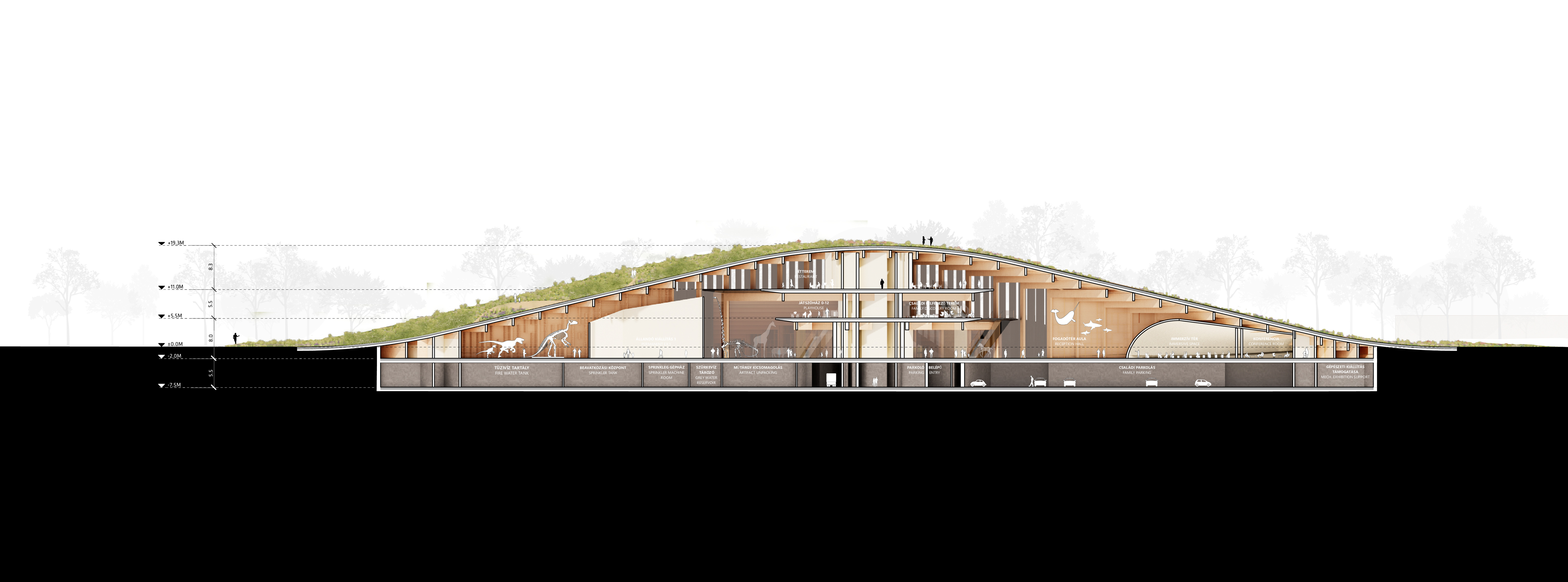STATUS
IN DESIGN
DEBRECEN, HUNGARY
CLIENT
DIF
TYPOLOGY
Culture
SIZE M2/FT2
22,900 / 246,494
STATUS
IN DESIGN
SHARE
Located on a former sports ground at the edge of Debrecen’s Great Forest, Nagyerdő, the new Hungarian Natural History Museum is defined by three overlapping volumes that rise and fall with the landscape.
The museum will replace the existing institution in Budapest, supporting the government’s vision to establish Debrecen as a key regional hub by 2030. Commissioned by the museum and the Ministry of Culture and Innovation, the building will house permanent and temporary exhibition halls, educational and research facilities, public amenities and back-of-house spaces, creating a new cultural and scientific destination in Hungary’s eastern region.
Approaching from any direction, visitors are met with open plazas, winding forest paths and framed views through and over the building. The museum is accessible from all sides, integrating it into both the urban fabric and the surrounding natural landscape. The arrival is marked by a generous southern plaza that forms a meeting point for community life and museum activities.
Inside, the reception hall acts as a central compass point, offering glimpses into the surrounding exhibition wings – five for permanent galleries and one for temporary shows and public programs. Above, a library and restaurant offer views into the forest canopy, while below, a learning hub hosts workshops, play spaces and research labs for students, families and staff.
“Natural history is a subject dear to me – so dear that I named my oldest son Darwin. To that end, it is a great honor to have been entrusted with the authorship of The Hungarian Natural History Museum in the great forest of Debrecen. Our design is conceived as an intersection of paths and lineages. Intersecting ribbons of landscape overlap to produce a series of niches and habitats, halls and galleries, blending the inside and the outside, the intimate and the mastodontic in seamless continuity. The result is a manmade hill in a forest clearing; geometrically clear yet softly organic - an appropriate home for the wonders of the natural world.”
Minimizing its footprint, the museum is partially hidden in the terrain. The sloping green roofs are planted with native species, offering habitats for local flora and fauna while visually extending the park over the museum. Vegetation continues through the site and into the building, offering areas for rest and gatherings for the public year-round.
Bjarke Ingels Angel Barreno Gutiérrez Hanna Ida Johansson Jakub Fratczak Juan Carpio Camila Antonella Mina Nicolas Bachmann Bellido Dominika Kłopotek Gian Marco Prisco Olivia Sarra Gómez Alessandra Baroni Camila Pagnoncelli
Vikár és Lukács Építész Stúdió
Museum Studio - London
TYPSA
